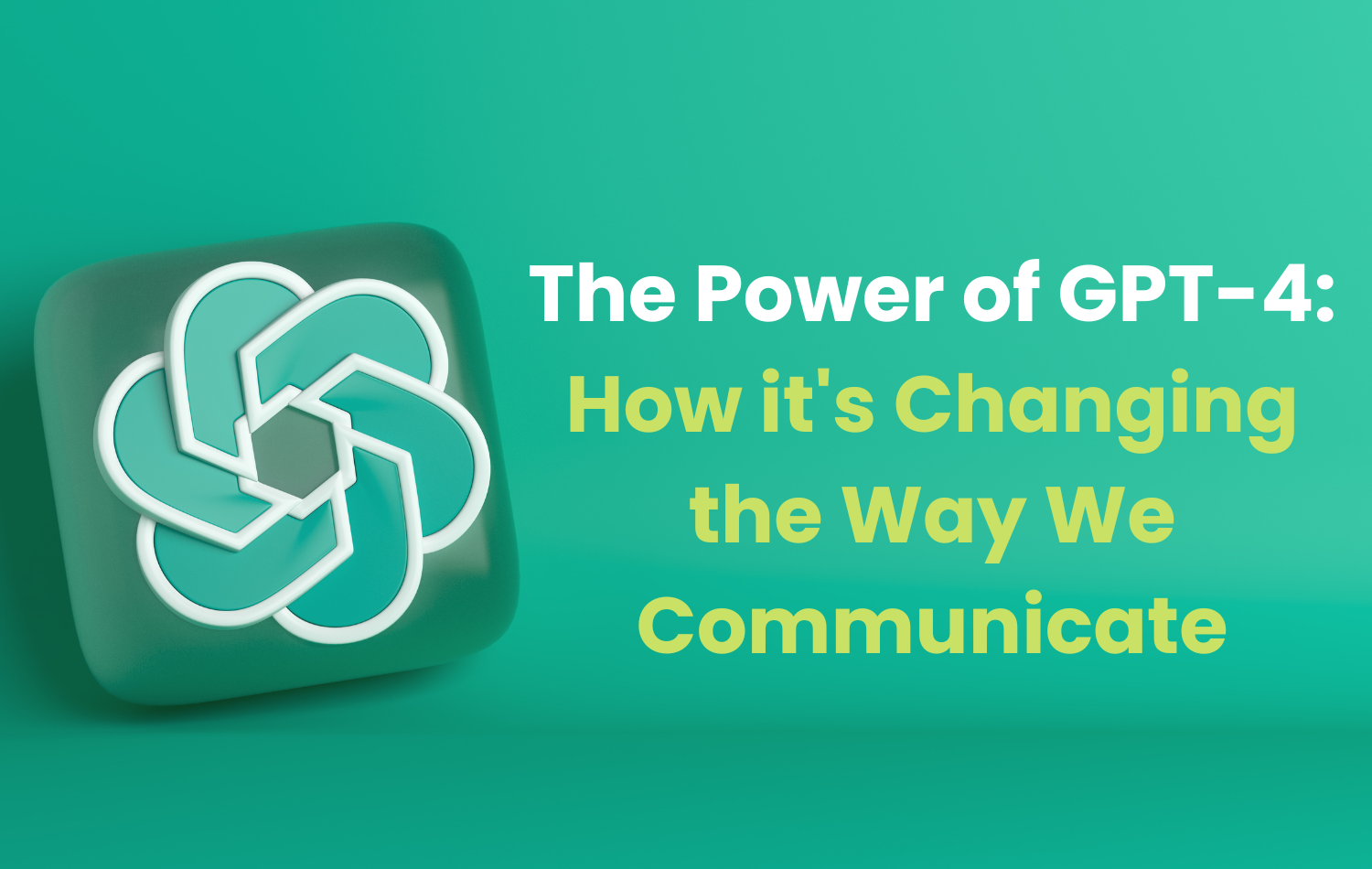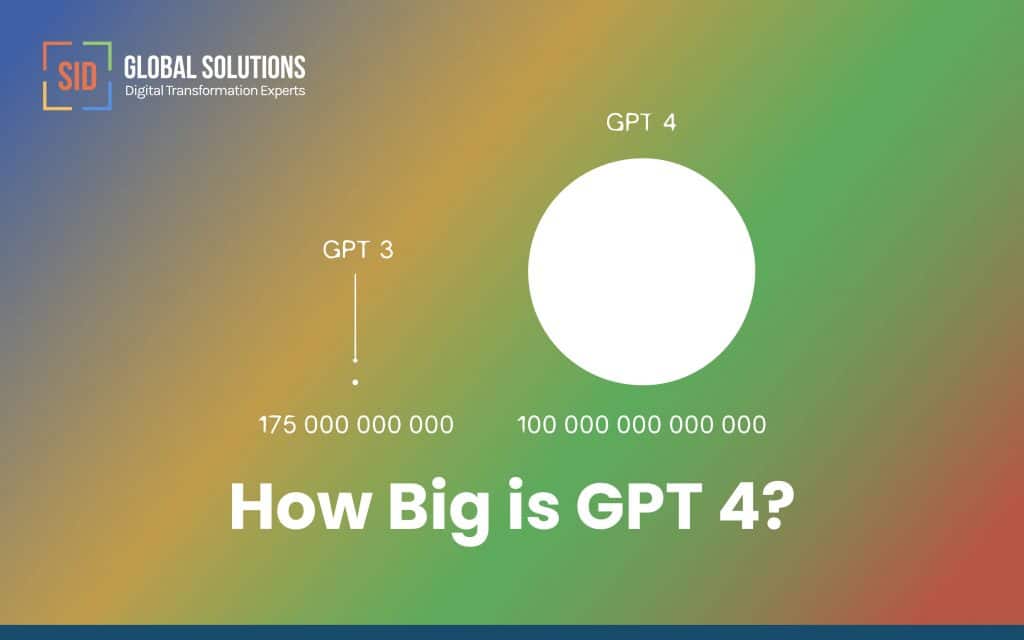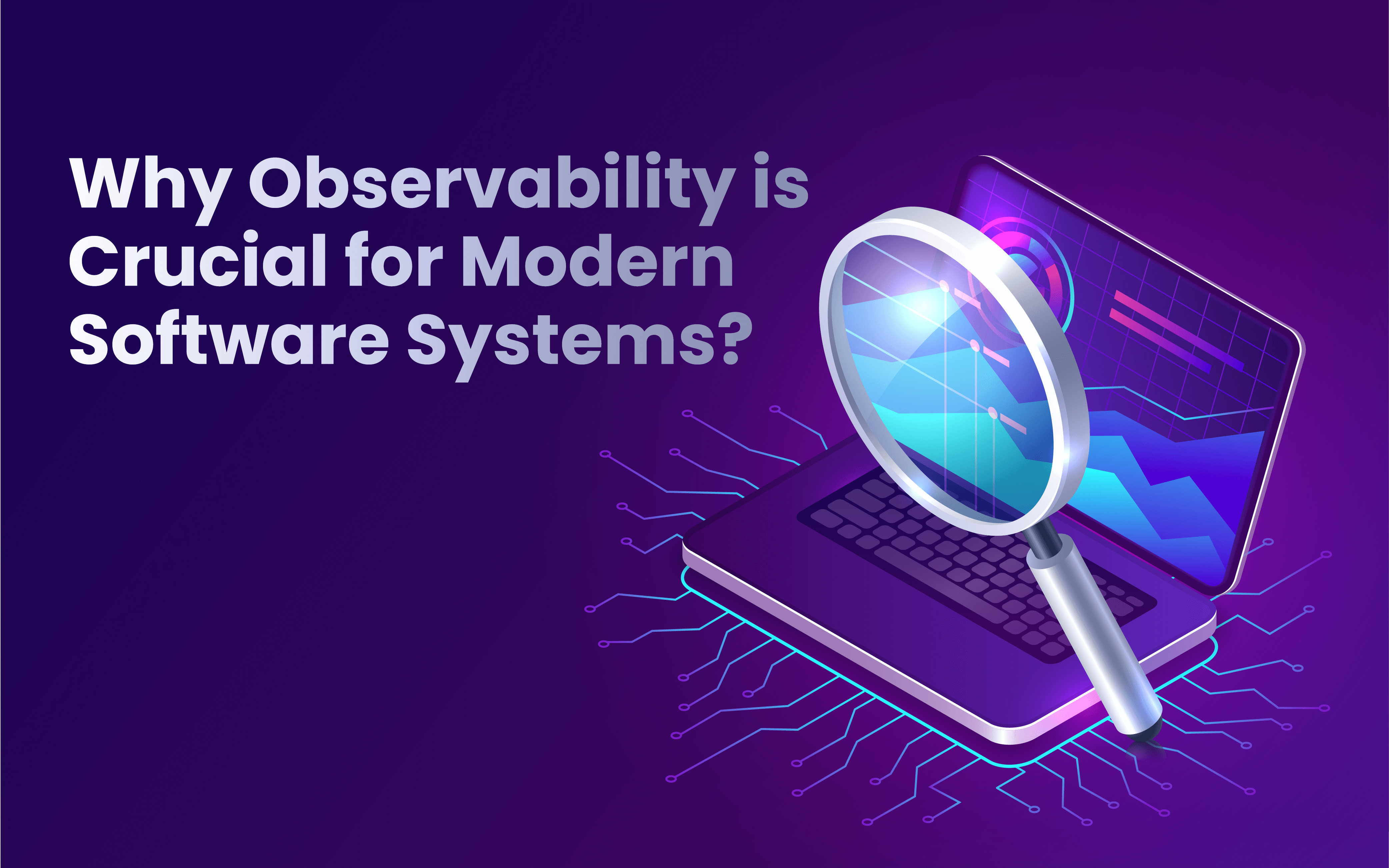Blogs
To know about all things Digitisation and Innovation read our blogs here.
Artificial Intelligence
The Power of GPT-4: How it’s Changing the Way We Communicate
SID Global Solutions
26 January 2023

Introduction:
The Generative Pre-training Transformer (GPT) model, created by OpenAI, has a new iteration called GPT-4. It is a cutting-edge language generation model that can produce text that is similar to human speech with great accuracy and fluency. GPT-4 is capable of natural language understanding, machine translation, and text summarization, among other tasks. In this post, we will discuss the features, capabilities, and potential applications of GPT-4.
Features and Capabilities:

- GPT-4 has been trained on a massive amount of data, making it capable of understanding and producing text in a wide range of languages and topics.
- GPT-4 can produce writing that is cohesive, fluid, and grammatically accurate. It can also produce text that is appropriate for the surrounding situation.
- GPT-4 has a large vocabulary and can generate text with a high degree of detail and complexity.
- GPT-4 can complete text input, predict the next word, generate paragraphs, summaries, and even stories.
- GPT-4 can be fine-tuned for specific tasks such as machine translation, text summarization, and question answering.
Potential Applications:
- Content creation: GPT-4 can be used to generate articles, blog posts, and social media content.
- Language Translation: GPT-4 may be tailored to do certain tasks including question-answering, text summarization, and machine translation.
- Application Possibilities: GPT-4 may be used to create material for blogs, social networking platforms, and publications.
- Language Translation: GPT-4 can be customised for machine translation jobs, enabling it to accurately translate text across different languages.
- Text summarization: GPT-4 may be adjusted to produce summaries of lengthy documents, making it helpful for jobs involving knowledge management and information retrieval.
Limitations:
- GPT-4 is still a machine learning model and may produce errors or biases based on the data it was trained on.
- GPT-4 may generate text that is not suitable for all audiences, so it’s important to review the generated text before publishing.
- GPT-4 is not capable of understanding the context in which the text is written. Based on the input given and the patterns discovered from the training data, it creates text.
GPT-4, like its predecessor GPT-3, is a transformer-based language model that utilizes deep learning techniques. An adaptation of the transformer design known as the Transformer-XL is used to train the model. Some of the essential elements and methods used in GPT-4 includes:
- Attention mechanisms: When generating text, GPT-4 employs attention methods to determine the relative relevance of the various input components. As a result, the model may concentrate on particular elements of the input and produce more text that is cohesive and appropriate for the given context.
- Pre-training: The GPT-4 programme has been pre-trained on a vast quantity of text data, enabling it to comprehend and produce text in a variety of languages and subject areas. Pre-training entails putting the model through its paces on a sizable corpus of material, including books, papers, and webpages.
- Adaptation: By pre-training GPT-4 on smaller, task-specific datasets, it may be tailored for certain tasks like language translation, text summarization, and question answering.
- Language Modelling: Since GPT-4 is a language model, it has been taught to anticipate the following word in a sentence depending on the context. As a result, it can produce writing that is grammatically and structurally sound.
- Neural Network: The GPT-4 algorithm is based on neural networks, a class of machine learning models intended to simulate the structure and operation of the human brain. Layers of linked nodes, or “neurons,” that process and send information make up neural networks.
- Optimization Algorithms: The GPT-4 model updates the model parameters and minimises the loss function by using optimization algorithms like Adam and LAMB.
- Large Scale Data: Because GPT-4 is trained on a vast quantity of data, it can comprehend and produce text in a variety of languages and themes. The model is trained on strong GPUs to speed up the process, and the vast amount of data is kept in cloud-based data centres.
Overall, GPT-4 achieves its high degree of language interpretation and generating skills by combining cutting edge deep learning algorithms with big scale data.
Conclusion:
GPT-4 is a potent language generation model that can generate writing that is human-like with a high degree of accuracy and fluency. It is a useful tool for many sectors, including content generation, language translation, and virtual assistants, because to its broad variety of skills and prospective uses. But before posting, it’s crucial to study the generated content and be aware of its limits. Since GPT-4 is a more recent model, research is continuously being done to further enhance it.









